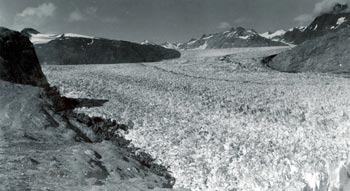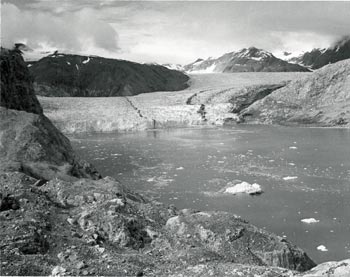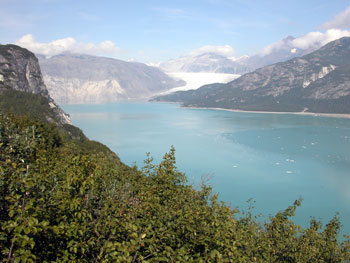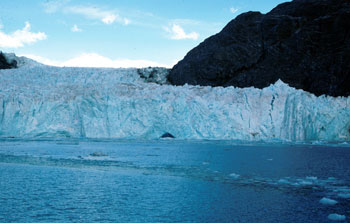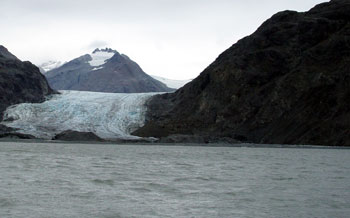Editors and Reporters: To interview the author during the Geological Society of America meeting, please contact the GSA Newsroom on 1-713-853-8329. Molnia will be presenting a poster (#76-3) at GSA on Wednesday, Oct. 8, from 8 a.m. to noon in Exhibit Hall E.
Most glaciers in every mountain range and island group in Alaska are experiencing significant retreat, thinning or stagnation, especially glaciers at lower elevations, according to a new book published by the U.S. Geological Survey. In places, these changes began as early as the middle of the 18th century.
Although more than 99 percent of Alaska's large glaciers are retreating, a handful, surprisingly, are advancing.
The Glaciers of Alaska, authored by USGS research geologist Bruce Molnia, represents a comprehensive overview of the state of the glaciers of Alaska at the end of the 20th century and beginning of the 21st century. Richard Williams Jr., an emeritus senior research glaciologist with the USGS, said the 550-page volume will serve as a major reference work for glaciologists studying glaciers in Alaska in the years and decades to come.
The report uses a combination of satellite images, vertical aerial photographs (black-and-white and color-infrared photos taken from airplanes, looking straight down), oblique aerial photographs (color photos taken from the air at an angle, such as most regular photos), and maps, supported by the scientific literature, to document the distribution and behavior of glaciers throughout Alaska.
The author concludes that, because of the vast areas encompassed by the glacierized regions of Alaska, satellite remote sensing provides the only feasible means of monitoring changes in glacier area and in position of termini -- the end of a glacier -- in response to short- and long-term changes in the marine and continental climates of Alaska.
Alaskan glaciers are found in 11 mountain ranges, one large island, one island chain, and one archipelago. Details about the recent behavior of many of Alaska's glaciers are contained in this richly illustrated book, with multiple photographs and satellite images, as well as hundreds of aerial photographs by Molnia, taken during his more than four decades of work in Alaska.
Three other USGS glaciologists authored two sidebar sections of the book: Columbia and Hubbard Tidewater Glaciers, by Robert M. Krimmel; and The 1986 and 2002 Temporary Closures of Russell Fiord by the Hubbard Glacier, by Bruce F. Molnia, Dennis C. Trabant, Rod S. March, and Robert M. Krimmel. A third section, Geospatial Inventory and Analysis of Glaciers: a Case Study for the Eastern Alaska Range, was authored by William F. Manley, Institute of Arctic and Alpine Research (INSTAAR), University of Colorado.
This professional paper (USGS Professional Paper 1386-K) is available in print and online at http://pubs.usgs.gov/pp/p1386k/. It is the 8th volume to be published in the Satellite Image Atlas of Glaciers of the World series; the other seven volumes are available in print and online at http://pubs.usgs.gov/fs/2005/3056/ More than 100 glaciologists from the United States and other nations have collaborated with the USGS to produce these 11 volumes.


 Products
Products